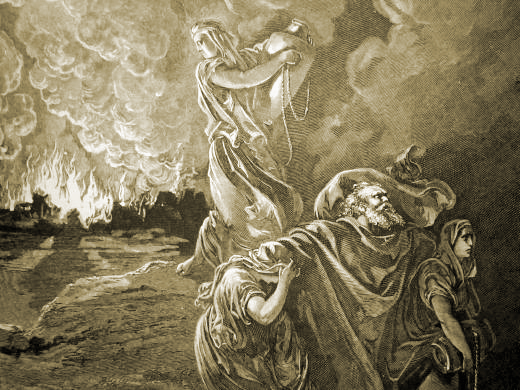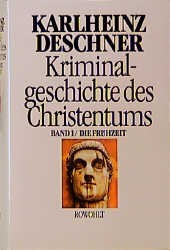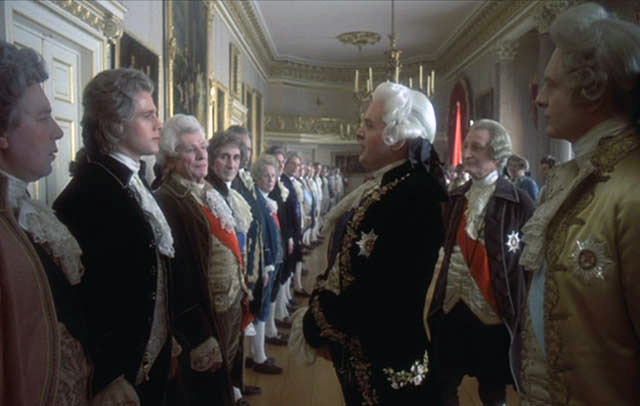
On Guillaume Faye
Guillaume Faye outlines a compelling vision to the immigration problem in the last chapter of his book Archeo-Futurism. This is presented in the form of a utopian dream, and should be seen in part as a reaction against the doom and gloom despair of the French New Right. I might also add that fiction has the added utility of allowing a French writer to advocate more extreme solutions and avoid hate speech laws.
The basic narrative is straightforward enough, if short on details. Sometime in the mid-twenty first century, due to a series of environmental disasters and resource shortages, Europe is plunged into a series of internecine wars. America is gripped in an endless series of race riots and is unable to help. Into this chaos, Russia sends an army of liberators to restore order.
What follows afterwards is reminiscent of the more visceral moments of William Pierce’s Turner Diaries. Native Europeans regain a sense of their identity. A Nietzschean hypermorality is realized. The vast majority of non-whites are summarily liquidated over the course of a few months. The handful of non-white survivors are forcibly shipped en masse to the remote island of Madagascar.
A new European Imperium is created out of the ashes of the Old Europe. Picture an empire with explicit inequality enshrined in law, an agrarian paradise with a small bureaucratic elite lording over a continent of hobbits. Faye is obviously borrowing heavily from the American writer Francis Parker Yockey.
Curiously, Faye is dismissive of America, seeing it as a separate entity—culturally, spiritually, historically—from Europe. Indeed, America is seen as an occupying power, imposing its grotesque lifestyle and values on Europeans. It could even be said that a new European Renaissance requires the death of everything American, including America itself. I sense a certain amount of schadenfreude in Faye when he describes an American continent in a state of mass starvation with race riots in every major city.
But who can blame Faye in wanting to write off America as a lost cause? The white nationalists have a far more nebulous ephemeral definition of identity than their European ancestors (i.e., if a man gets a stamp certifying his whiteness then he is my brother is how your average WN reasons). Then there is the feminism, the patriotards, the rock music, the culture, the greed, the degeneracy, the conservatives… the problems never seem to end.
Faye is dead wrong, however, on the Jewish question. He regards the Jews as a part of the European social fabric and is a rabid supporter of Israel. Just like Jared Taylor, Faye believes that European Jewry will come around to his way of thinking. Indeed, Jews are a well integrated minority in Faye’s Imperium. This is simply unacceptable.
Just as problematic is Faye’s biological concept of a European. It’s clear in his writings that he makes no distinction between North and South, Mediterranean or Nordic, Germanic or Slav. Faye would have you believe that very limited racial mixing has taken place in Spain, Portugal, and Italy. Just close your eyes and pretend that all the Europeans living from Lisbon to Vladisvostok are pure White. Of course many white nationalists share this delusion. In Europe, the sand nigger from Malta, Norman Lowell and the Finn, Kai Murros, peddle similar nonsense.
What to make of Faye? I am rather ambivalent here. Not a good writer or a bad writer. His ideas need to be taken with a ton of salt.
On Tom Sunic
There is a distinct dualism in Sunic. An abyss between the radical and respectable that is not easily reconcilable.
There is Sunic as the erudite scholar, translator and academic. His two books Against Democracy and Equality and Homo Americanus are the most eloquent critiques of America from a European New Right perspective I have read. There is a sense of nobility, aristocracy, refinement, taste, beauty and greatness. I must admit that it was Sunic who first introduced me to the potency of National Socialist scholarship; and the importance of incorporating pre-Christian pre-Socratic pagan writings in European consciousness. Fundamentally, I see nothing wrong with him as a writer.
Then there is Sunic as the political imbecile. The man who promotes the path of “non-violence”, of kosher country club reactionary conservatism, of democratic demagoguery, of “taking back” the US, of endless qualifications, of the lowest common denominator, of outright craven cowardice: the American Freedom Party.
On Arthur Kemp
Kemp is the most outspoken public figure I noticed who advocates the desperate Orania-style solution (isolated Aryan outposts) in his book Nova Europa: European Survival Strategies.
Kemp’s solution is only viable if you agree with Alain de Benoist and much of the French New Right (Faye excluded) that it’s far too late to achieve any success through revolutionary party politics; that some sort of political accommodation with the hordes of non-whites now invading Europe like a swarm of locusts will have to be made.
I read the above mentioned book after being very impressed by March of the Titans. I came away bitterly disappointed. He’s actually one of the few men out there who has an accurate view of history yet he won’t fight.
On WN feminists
They accept every single triumph of the left on the woman question as a fait accompli. Covington is a prime example of this.
On Johnson et al
Johnson, Spencer, Sunic and other white nationalists retain traces of conservatism, a belief that a perfect argument exists that can convince Whites to suddenly “wake up”; that the correct presentation of the “facts”, on whatever issue, will make a difference to the wider culture at large; that only ignorance has prevented otherwise decent and level headed Whites from taking action thus far. Hence, the endless multiplication of essays, speeches and conferences. The post-modern radical suffers from a singular blindness: that action and words are the same thing.
The problem with Johnson and others of similar ilk is that they think winning can be done without a drop of blood being spilled. No one needs to dirty his hands by engaging in street politics. No one needs to get hurt. No one needs to die. All that is needed is a quiet infiltration of the existing institutions with men sympathetic to our views, and a bloodless counter-revolution will happen.
White survival can only be properly understood as a war, without any rules of conduct. We are not dealing with an opponent that understands the concept of fair play. There will be no smooth transition of power. Should it not be obvious by now that all pro-white groups active in America are harmless?
On Francis Parker Yockey
Yockey, like Julius Evola, held to a spiritual conception of race which he believed to be more important than the biological. Already in the 30s he observed white Americans behaving like blacks and Jews. He did not object to clever non-whites immigrating to America as long as they assimilated into white society.
Imperium is a clever eloquent mish-mash of Lamark, Spengler, Schmitt, Haushofer, National Socialism, and even trace elements of Catholic Scholasticism. Yockey wanted to “prove” that a “Germanic” European aristocratic element existed within America. He is not your garden variety white nationalist patriotard (hence his popularity), but the book is a failure.
But I agree with you: universalist religions like Christianity have no use for a purely biological conception of race. White Nationalists are deluded in this and Linder is correct that one must choose a side.
On Revilo Oliver
I take two important lessons from Oliver that most white nationalists would do well to heed:
1) A contempt for everything supernatural and conspiratorial. There is no “god” out there looking after the interests of Whites and ready to rescue them at the last moment. There is nothing written on the stars or in the book of life that says Whites must survive. Whites are as beholden to the laws of the universe as all the other animals. And the universe does not know “mercy” when confronted with degeneracy. (Some white nationalists envision a “Mad Max” scenario in which a system collapse presages a mass racial “awakening”. But this assumption is without hard evidence and a mass extinction is just as likely. That is, no political movement can guarantee victory.)
2) A disgust for the ordinary White American, the “ordinary Joe”. Whites are to be saved for sake of the handful who are wise, beautiful, noble, and strong. The white working class has no value apart from the few who are culture creators; they are to be treated as raw material by those who lead. To put it bluntly: most whites are not intellectually or physically impressive.
In my view, white nationalists should see Oliver as a source of inspiration. Will this happen? I highly doubt it.
On women
Reading this article reminds me of a passage written by William G. Simpson in his book, Towards the Rising Sun:
There is hardly one man in a thousand who will not put aside his ideals, his highest vision, everything which for him is God, in order to get the girl he loves or to be able to stay with the girl he has married. Moreover, there are all the ways which the wiles of woman have with a man. Nietzsche said, “Women always intrigue privately against the higher souls of their husbands,” and as a generalization his statement is true. And such must most women be.
For, again speaking generally, the instinct in man is to create, and the instinct in woman is to procreate. She is more physical than man, lives closer to the earth, and, naturally and justly since to her is committed the continuation of the race, once she is with child she is almost certain to be overwhelmed with a veritable tidal wave of sheer biological concern for security. And a reasonable degree of security both she and the child ought to have. And if you as would-be creator feel that you cannot do your work and provide that security, then you had better simply refrain from marrying.
Sadly, the numerous absurdities written by women and their male sycophants in the white nationalist movement to rationalize (encourage) weakness does not inspire much confidence.
A man’s focus is to create. A woman’s focus is to procreate. Nietzsche said, “Practically all problems a woman encounters can be solved by one solution: pregnancy.”
Of course we can imagine outliers or exceptions. Savitri Devi is known to have written: “I cannot love any man that chooses me over his ideals.” But Linder is correct in writing somewhere that such women are one in a hundred thousand…
On overmen
Nietzschean morality requires that superior men surrender all hope of personal gain for the sake of the cause: fame, money, wealth, respectability, hope for an afterlife, even a normal family life if need be. If they can die for the cause, living in penury if need be is mild by comparison. The German Idealists already pointed out that sincere authentic “virtue” requires a man to have no possibility for personal gain. Otherwise, what is the whole point of this struggle if whites merely end up as spiritual semites (inner Jews)?
Very few American Whites grasp this. Pierce and David Lane being the notable exceptions.









